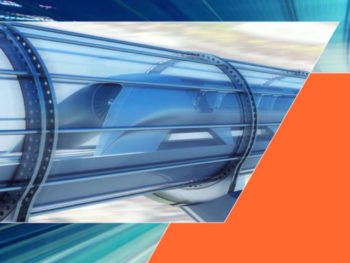The UK’s Transport Research Laboratory (TRL) has called on the fleet and freight sectors to prepare for the reality of Hyperloop technology as it says it could become a reality within the next five years.

The concept – which would see a sealed tube carrying pods free of air resistance or friction travel at estimated top speeds of 760mph – was envisaged back in 2013 by Tesla’s Elon Musk and could bring significant benefits in terms of speed of travel, energy efficiency and economic prosperity.
Although it’s seen by some as futuristic and over-hyped, the technology is actually being worked on by several companies to turn the fiction into reality, including Virgin Hyperloop One and Hyperloop Transportation Technologies.
Now, Dr Gavin Bailey, TRL’s technical and business development manager and freight innovation expert, is calling for the creation of a UK centre of excellence for Hyperloop as he highlights how competition is mounting internationally with France set to have a test track operational later this year.
As outlined in a new research paper from TRL, Dr Bailey says the technology’s potential to transform the freight transport sector alone is vast but the technology must be proven and the safety verified. As such, he is calling for the UK to establish a real and virtual test bed, develop knowledge and experience of the technology to inform safety systems understanding and influence design and implementation strategy, highlighting the growth potential for UK Plc.
Speaking to Fleet World, he said: “The technology’s application for passenger transport may well be 20 years away, but its use in a freight capacity could be a reality within the next five years. That’s because it’s far simpler and more cost-effective to transport non-human cargo. To respond to the surge in demand for online delivery of break bulk consumables, tunnels can be smaller in circumference. They can also be embedded a metre underground, like a typical utilities pipe, rather than the ten metres needed for a tunnel large enough to transport pods of people.
“Government-funded trials are already taking place in the UK to prove the concept, albeit using linear induction motors as opposed to a vacuum. The MAGWAY project, for example, will deliver parcels between distribution centres and consolidation centres in Greater London, via underground pipelines. It’s expected that, once this logistics method is commonplace, it will significantly reduce the volume of HGVs on the road network; lowering emissions, accident rates and road maintenance costs in the process.”
Dr Bailey also said that Hyperloop should be considered as the freight industry reviews current business models and plan for change.
“A way to do this would be to concentrate on bulk freight that will be too large for planned pipelines to accommodate. Another way would be to collaborate with peers to instigate back-fill initiatives that optimise traditional freight transport and therefore help to make operators more competitive,” he added.
To read TRL’s research paper on Hyperloop technology, click here.

